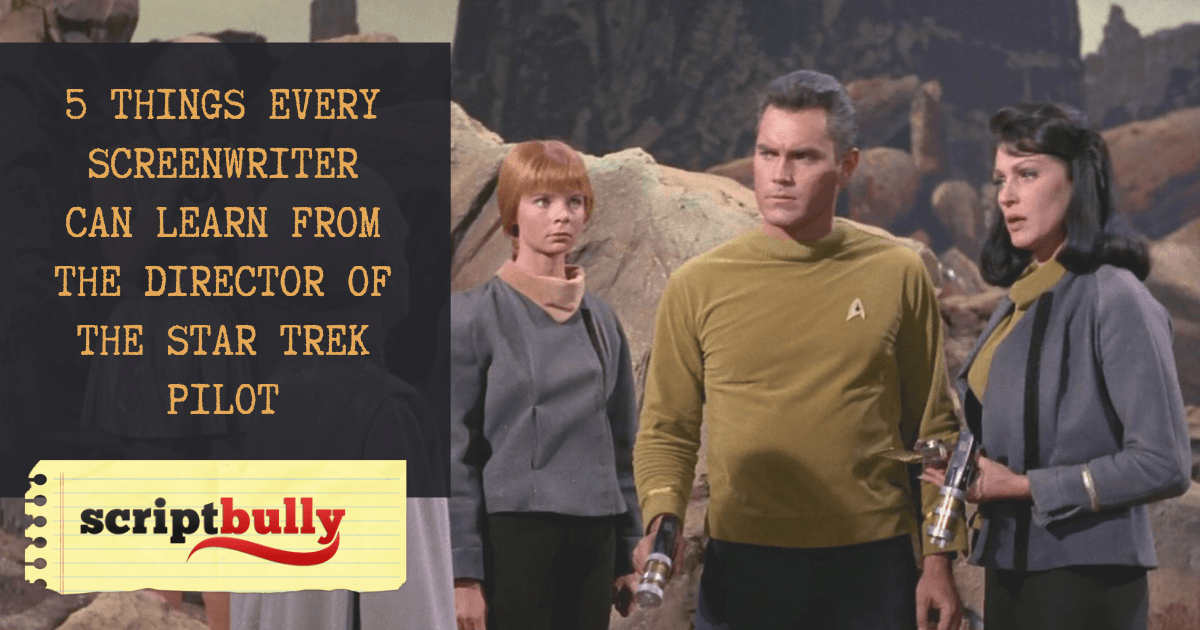It’s hard to say anything NEW about the most famous/profitable/legacy-building science-fiction story of all time, Star Wars.
And though George Lucas is revered as a filmmaker — and action-figure guru — he’s not always appreciated for his merits as a screenwriter, especially in the original Star Wars. (And especially when you consider his later, more uneven, work in the prequels.)
That being said, Lucas does employ some deft screenwriting techniques in Star Wars: A New Hope. And many of them, as screenwriters, we can borrow.
So, here are 5 Things Every Screenwriter Can Learn From the Classic, Original Star Wars:
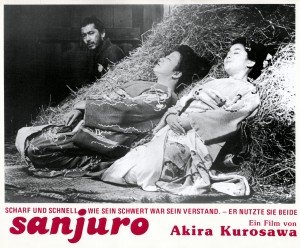 Screenwriting Hack #1: If Yer Gonna Steal, Steal From the Best
Screenwriting Hack #1: If Yer Gonna Steal, Steal From the Best
We all know about Lucas’ man-crush on the Joseph Campbell Mythic Structure thing-y. But the real look, feel — and narrative framing — of Star Wars is all Akira Kurosawa, the famed Japanese director.
Sure there’s the samurai-inspired light saber motif and the Toshiro Mifune-style robes worn by Obi-Wan Kenobi. But it’s how Kurosawa, in his film Hidden Fortress, told the story from the POV of two road-weary peasants that gave Lucas the idea for C3PO and R2D2 as narrators for his saga. (A narrative device that not only provides the film with much-needed comic relief, but keeps it from feeling episodic.)
Screenwriting Takeaway #1: If yer looking for some structural inspiration, forget the latest Michael Bay offering and go straight to the masters.
Key Takeaways (Or For Those With ADD)
- Steal from the best (not the mediocre)
- Make sure your first image has conflict (not pretty pictures)
- Don’t explain every unfamiliar concept
- Have your bad guys disagree on methods
- Forget action scenes (just have emotional stakes)
 Screenwriting Hack #2: Forget Setting, Have Your First Image Establish Conflict
Screenwriting Hack #2: Forget Setting, Have Your First Image Establish Conflict
Don’t open your script with a character hitting the snooze button or fade in on some crane shot of a city. (Which almost every script these days does.)
Instead, notice what Lucas did with the cinematic opening of Star Wars. A big spaceship shooting lasers…followed by an even BIGGER spaceship shooting even BIGGER lasers.
We have NO idea what these ships are or who’s driving them. Or what the hell is going on.
We just know that little ship is about to be swallowed by that big ship. (A nice touch since that is thematically what the entire story is about.)
Screenwriting Takeaway #2: Have your first image in your script throw the audience into conflict. (And THEN establish setting.)
 Screenwriting Hack #3: Resist the Need to Explain EVERY Unknown
Screenwriting Hack #3: Resist the Need to Explain EVERY Unknown
Some screenwriters, especially those doing sci-fi or fantasy, often feel the need to explain every single obscure or unfamiliar term or nuance of film location, worried an audience will get confused.
“Ah, yes, the Particle Transporter. The device that can disassemble, then re-assemble matter and can only be found on the planet, Nebu-Tron. Why didn’t I think of that?”
Technical exposition like this may prevent confusion. But an audience NOT KNOWING what every piece of technical jargon in your story means can give your yarn a level of authenticity – an element there’s a whole other world that EXISTS, but we don’t know about. And this can create serious audience engagement.
Notice how mny foreign terms are thrown at us in Star Wars with NO explanation:
- Moisture farmer
- Power converters
- Nav-Computers
- Binary load lifters
All but the most obsessed Star Wars fans, to this day, have NO idea what any of this stuff does. And, yet it gives the feeling that these are real characters using real devices. (No matter how unreal or silly the situation, or moisture farmer, may be.)
Screenwriting Takeaway #3: Don’t explain every technical (and insider) detail related to your story. (Leave a bit of mystery – it’ll boost audience engagement.)
 Screenwriting Hack #4: Have Yer Bad Guys Disagree On Methods
Screenwriting Hack #4: Have Yer Bad Guys Disagree On Methods
Too often screenwriters will create a legion of bad guys/antagonists who agree on every detail and strategy for getting what they want.
But in Star Wars Lucas constantly has the big, bad Empire agree on the over-arching goal of “destroy the Rebel Alliance” — but disagree on the methods for realizing this goal.
Whether its Gran Moff Tarkin disagreeing with Darth Vader over the impact of Obi-Wan Kenobi or Darth Vader creating a hostile work environment by strangling a co-worker…
…these “conference room” disagreements not only provide some nice comic relief. They also add serious conflict to exposition-heavy scenes that could be as dull as a workplace safety seminar otherwise.
Funny, yes? Powerful way to add conflict to every scene — even the ones with the bad guys? Absolutely.
Screenwriting Takeaway #4: Make sure your gaggle of bad guys agree on the central goal, but disagree passionately on the methods for achieving this goal. (This disharmony usually leads to their undoing.)
 Screenwriting Hack #5: Fill Your Fight Scenes With Grudges (Not Choreography)
Screenwriting Hack #5: Fill Your Fight Scenes With Grudges (Not Choreography)
Nothing gets me angrier than some millenial smart-ass named StarWarsBlasterz43 trying to convince me that the Phantom Menace light-saber fight, with Darth Maul and a young Ewan MacGregor…
…is so MUCH BETTER than the Star Wars sword fight between Darth Vader and a Alec Guiness, who was in his 60s at the time.
Simply because the “fighting” isn’t any good.
There’s no doubt that Alec Guiness looks a bit more prepared for an AARP convention than a light-saber duel at the end of Star Wars.
But. That. Is. Missing. The. Point.
The power of the final confrontation between Obi-Wan Kenobi and Darth Vader is that these men have serious history together. They go way back. (We have no idea how far back.)
And as they face off in a stew of resentment, jealousy – and revenge – we realize we are watching something really PERSONAL. (And that makes it some of the most emotional storytelling in the entire film. No matter how awkward the choreography may be.)
Screenwriting Takeaway #5: Ditch the three-page fight scenes full of explosions and car chases. Focus instead on old grudges being settled.
And really, if the entire collection of movies (and that includes the awful prequels) can teach you anything, it’s that special effects and CGI spaceships and special-edition creatures may look good on an iMac in a LucasFilm office…
But the real magic of Star Wars is in the characters, flawed as they may be, facing insurmountable obstacles. (And discovering who they are in the process.)
Something every screenwriter, even those writing a story that doesn’t contain a single moisture farmer, should aspire to.


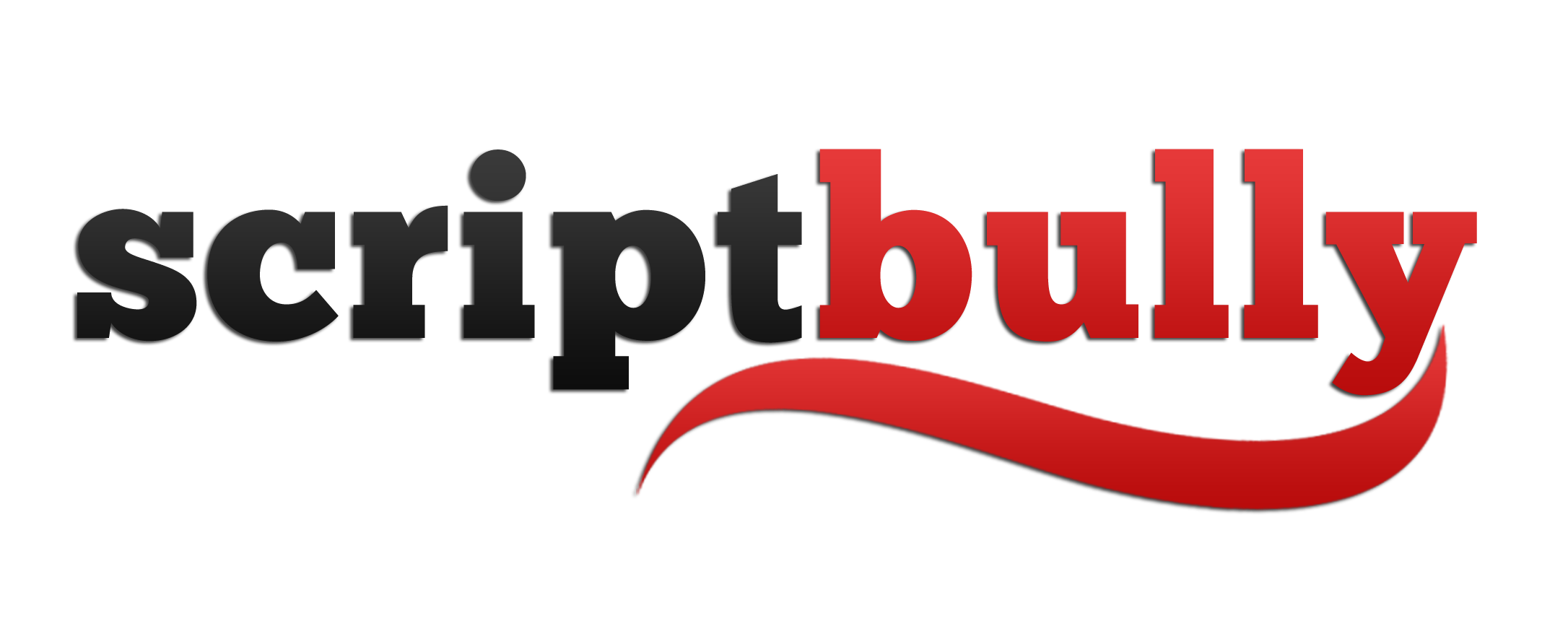
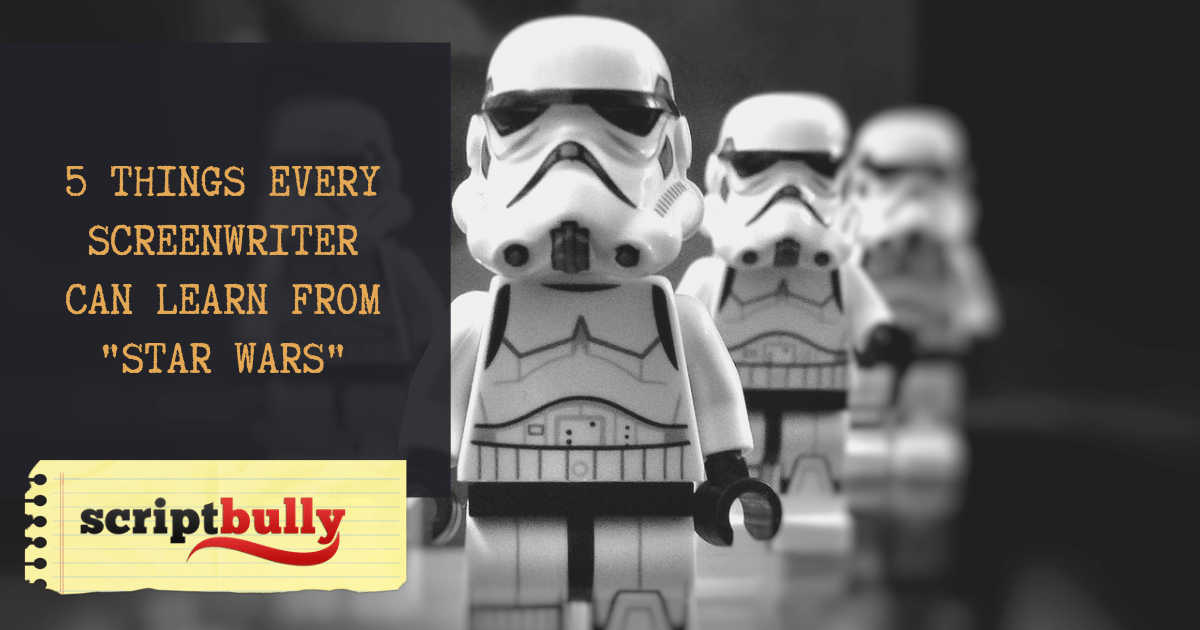
 Screenwriting Hack #2: Forget Setting, Have Your First Image Establish Conflict
Screenwriting Hack #2: Forget Setting, Have Your First Image Establish Conflict Screenwriting Hack #3: Resist the Need to Explain EVERY Unknown
Screenwriting Hack #3: Resist the Need to Explain EVERY Unknown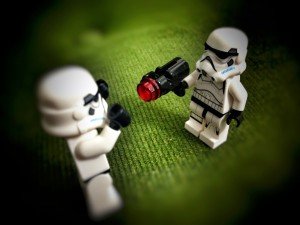 Screenwriting Hack #4: Have Yer Bad Guys Disagree On Methods
Screenwriting Hack #4: Have Yer Bad Guys Disagree On Methods Screenwriting Hack #5: Fill Your Fight Scenes With Grudges (Not Choreography)
Screenwriting Hack #5: Fill Your Fight Scenes With Grudges (Not Choreography)